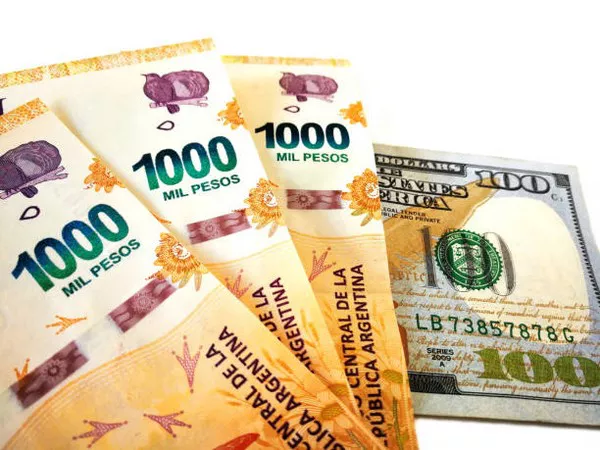Currency is not merely a medium of exchange; it is a reflection of a nation’s economic journey, resilience, and progress. The Argentine peso, the official currency of Argentina, has witnessed a complex history shaped by economic challenges, political upheavals, and periods of stability. This comprehensive exploration delves into the multifaceted narrative of the Argentine peso, tracing its origins, evolution, and the various chapters that have defined its value and significance.
Origins and Early Years:
The roots of the Argentine peso can be traced back to the 19th century. Argentina gained independence from Spanish rule in 1816, and the need for a stable currency became apparent. In 1820, the Banco Nacional was established, issuing the first Argentine banknotes. However, economic instability during this period led to a lack of confidence in the nascent currency.
The early peso faced challenges such as counterfeiting and fluctuations in value. It wasn’t until 1881, under the presidency of Julio Argentino Roca, that the Gold Peso Moneda Nacional was introduced. Pegged to the value of gold, this marked a significant step toward stabilizing the Argentine currency.
The Gold Standard Era:
The adoption of the gold standard brought a semblance of stability to the Argentine peso. During this era, the value of the peso was tied to a specific quantity of gold, instilling confidence in both domestic and international trade. The stability provided by the gold standard facilitated economic growth and attracted foreign investment.
However, the reliance on a fixed exchange rate with gold had its drawbacks. External shocks, such as changes in global gold prices, could impact the Argentine economy. Additionally, maintaining the gold standard became increasingly challenging during periods of economic expansion.
Challenges and Economic Shifts:
The early 20th century saw Argentina facing economic challenges, including the Great Depression of the 1930s. The country temporarily abandoned the gold standard in response to economic pressures. This period of flexibility allowed for currency devaluation, providing a mechanism to boost exports and stimulate the economy.
In 1935, Argentina returned to the gold standard, but it was short-lived. World War II and its aftermath led to a shift in global economic dynamics. In 1949, Argentina once again abandoned the gold standard, opting for a managed exchange rate system.
Peronism and Economic Policies:
The mid-20th century marked the rise of Juan Domingo Perón and the implementation of Peronist economic policies. The government intervened extensively in the economy, nationalizing industries and implementing protectionist measures. These policies had implications for the Argentine peso, as economic interventions impacted inflation and exchange rates.
During Perón’s presidency, multiple versions of the peso circulated, including the peso moneda nacional and the peso ley. Economic instability persisted, leading to a cycle of devaluations and attempts to stabilize the currency.
Currency Reforms and Peso Convertibility:
The late 20th century brought significant currency reforms. In 1983, amidst hyperinflation, the austral was introduced to replace the peso. However, the austral’s value quickly eroded, necessitating further reforms.
In 1991, under the presidency of Carlos Menem, the Convertibility Plan was implemented. This pegged the Argentine peso to the United States dollar, aiming to control inflation and attract foreign investment. While initially successful in stabilizing prices, the fixed exchange rate led to other challenges, including an overvalued currency and a loss of competitiveness.
The Economic Crisis of 2001:
The turn of the century witnessed one of the most challenging periods in Argentina’s economic history. The country faced a severe economic crisis in 2001, marked by a default on sovereign debt, devaluation of the peso, and social unrest. The fixed exchange rate was abandoned, and the peso’s value plummeted.
The crisis prompted a series of economic measures, including the introduction of the peso convertible and the adoption of a floating exchange rate. The Argentine government sought to restore economic stability through these reforms, but the impact lingered, shaping the country’s approach to economic policies in the subsequent years.
Post-Crisis Reforms and Currency Fluctuations:
In the aftermath of the 2001 crisis, Argentina witnessed a series of currency reforms and fluctuations. The peso convertible was abandoned in 2002, and the peso was once again the official currency. The government implemented measures to address inflation and stabilize the economy.
However, challenges persisted, and the Argentine peso experienced periods of volatility. The central bank intervened through various mechanisms to manage exchange rates, including the use of currency controls and interventions in the foreign exchange market.
Modern Challenges and Economic Policies:
In recent years, the Argentine peso has faced ongoing challenges, including high inflation rates and economic uncertainty. The government has implemented measures to address these issues, including negotiations with international organizations, changes in economic policies, and efforts to boost domestic production.
The Argentine peso continues to navigate a complex economic landscape, influenced by both domestic and global factors. In an era of interconnected financial markets, the currency’s value remains subject to fluctuations, requiring adaptive policies to ensure stability.
See Also: Argentine Peso (ARS) Currency: History, Symbol, Codes & Denominations
Conclusion:
The history of the Argentine peso is a tapestry woven with threads of resilience, economic shifts, and policy interventions. From its early years grappling with the complexities of nation-building to the challenges of modern economic dynamics, the peso has been a symbol of Argentina’s journey.
As the nation continues to navigate economic uncertainties and shape its future, the Argentine peso stands as a testament to the resilience of a currency intertwined with the ebb and flow of a nation’s fortunes. The ongoing story of the peso reflects not only economic intricacies but also the spirit of a nation forging ahead amidst the complexities of a dynamic global landscape.


